Hu Fang
Chinese Academy of Social Sciences, CASS
Abstract:
This paper describes the emergence of rhotic sounds in Mandarin Chinese. It consists of two parts. The first part describes post-oralization of initial nasal consonants in Chinese dialects and concludes how rhotic sounds and consequently vowel rhoticization emerges. The second part describes the phonetics and phonology of the rhotic sound and vowel rhoticization in Standard Chinese or Beijing Mandarin.
Hu Fang

Mr. Hu Fang is currently a research fellow of Institute of Linguistics, CASS. He received his Ph.D from the Department of Linguistics and Translation, City University of Hong Kong in 2005. Now he is engaged in the study of linguistics, especially phonetics. He focuses on the description of phonetic phenomena in Chinese and the search for universality in the phonetic diversity of languages.
East Asian Languages
Huang Xing
Chinese Academy of Social Sciences, CASS
Abstract:
East Asia is rich in tonal languages and the formation mechanisms and distributional types of tones in different language branches have both commonalities and differences. Generally speaking, Chinese languages, Tai-Kadai languages, and Hmong-Mien languages belong to the type of two-register and four-tones, which is intrinsically invoked by the loss of consonant codas and devoicing of the initials; Oppositely, some languages of Tibeto-Burman Branches that retain the voiced initials and consonant clusters didn’t lead to the birth of tone. The disappearance of the distinction between voiced and voiceless initials, the monophoneticization of consonant clusters, and the loss of stop codas are the main conditions for the emergence of pitch patterns and tonal types in Tibeto-Burman Languages.
The neat correspondence of tonal systems in Chinese, Tai-Kadai and Hmong-Mien languages was formerly considered to be the main evidence that they were derived from a single original language. However, the tone of Chinese and Tibeto-Burman languages, and that of Tai-Kadai languages and Hlai and Kra languages are not strictly correspond and even non-correspond at all, whereas they are undoubtedly genetic-related languages. Therefore, the tonal correspondence cannot be regarded as the evidence that Chinese, Tai-Kadai, and Hmong-Mien languages descended from the same ancestor. It is not convincing in probability that Tai-Kadai, Hmong-Mien and Chinese languages have developed the neatly correspond tonal system due to the same monosyllabic feature and the simplification of codas. More likely, the tone system of Tai-Kadai and Hmong-Mien languages is developed from the influence of Chinese languages. The specific process is that after borrowing a large number of Chinese loanwords with the tonal feature, this feature then gradually come to be employed in certain native words without tone.
Huang Xing
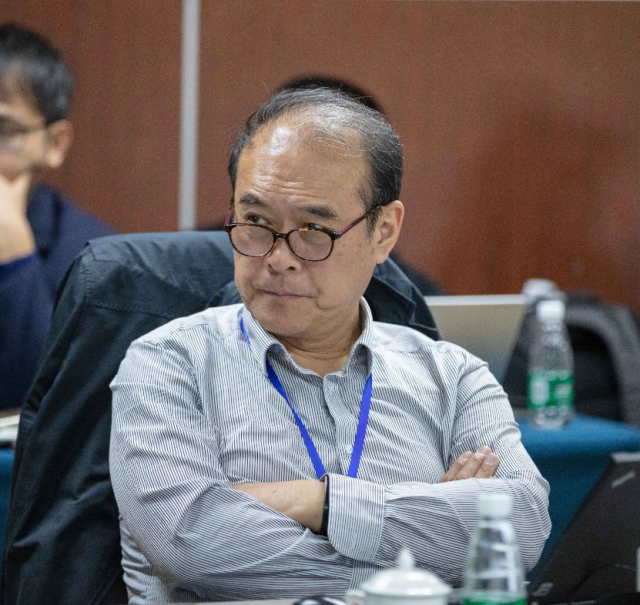
Prof. Xing Huang is currently a professor of Beijing Normal University, and serves as the research fellow in the Institute of Ethnology and Anthropology, CASS. He formerly was also the Distinguished research fellow of Center for Language Resources, Beijing Language and Culture University. His research interests include Sino-Tibetan linguistics and the minority languages planning studies. He had hosted or participated in publications of several representative academic works such as Series of Brief Descriptions on Minority languages in China and Languages of China. He was elected as the vice president of Linguistic Society of China in 2014.
Zhang Hongming
University of Wisconsin-Madison
Abstract:
Based on a synchronic phonological analysis of prosodic features at the word level, human languages can be classified as tonal language, stress language, and pitch-accentual language. This study argues that such a classification needs to be critically re-examined in the light of diachronic change in the role of prosodic features in a language, which may alter the typological characteristic of a language. Such changes can be depicted in the form of a cycle which is {toneless à syllable tone à word tone à pitch-accent/stress (toneless) à tone à …}, seen as follows:

(Key: σ = syllable, 0 = toneless, T = tone, P = pitch-accent, S = stress)
The typological nature of prosodic features is closely related to the prosodic hierarchical units of a human language, a complete inventory of which will contain various levels including the mora, the syllable, the foot/phonological chunk, the prosodic word, the clitic group, the phonological phrase, the intonation phrase, and the utterance. The prosodic units of any specific language can find expression on different levels of the prosodic hierarchy, which is part of Universal Grammar, but a specific language may not necessarily include all the units on the prosodic hierarchy. The set of prosodic units a specific language encodes depends on whether this language makes use of the parameter that defines these prosodic units. To take ‘foot’ for example, one of the prosodic units on the prosodic hierarchy relevant to stress languages with binary-contrast: the features of the parameter relevant to the stress include prominence, predictability, rhythmicity, culminativity, hierarchical structure, etc. However, as a tonal language without binary-contrast, Chinese does not have structural categorized stress on the lexical level. The neutral tone is not equivalent to the unstressed syllable. As opposed to other tones, its phonological demonstration is the tone changing process, such as spreading, downstep, upstep, downdrift, floating, tone terracing, tone sandhi, neutralization, etc. The unstressed syllable, in contrast to the stressed syllable, is the process of metrical operation, such as iambic, trochee, clash, line conflation, etc. To distinguish tone and stress, we should employ phonological means, rather than phonetic means. The parameters in phonetics like pitch, intensity, and duration are not workable to distinguish the differences holding among tone, stress and pitch-accent which are concepts in phonology instead of phonetics.
Within the typological framework presented here, I will demonstrate that it would be conceptually misguided and empirically groundless to claim that Mandarin Chinese is a stress language, as the language does not possess any of the phonological properties required of such a phonological classification.
Zhang Hongming

Prof. Hongming Zhang is currently the professor and the head of UW-Madison Chinese Language and Linguistics Program and the director of UW-Tianjin Summer Chinese Program. He received his Ph.D. from the University of California at San Diego in 1992. Prof. Zhang now is the president of International Association of Chinese Linguistics. He has published and edited more than 30 books and papers in the field of Chinese linguistics, syntax-phonology interface, prosodic phonology and history of Chinese language.
Walter Bisang
Johannes Gutenberg-Universität Mainz
Abstract:
Linguistic discussions on complexity come in various shades. Some models are based on cognitive costs and difficulty of acquisition, others look at the properties of the form by which grammatical distinctions are expressed and connected, yet another group of linguists focus on recursion and merge and, finally, complexity can be measured in terms of algorithmic information theory.
What is common to the above approaches is their concentration on linguistic form. In my presentation, I argue that form is only one side of complexity. If one looks at complexity from the perspective of the two competing motivations of explicitness vs. economy the form side can be seen as the result of explicitness, while there is a second side which is based on economy and the pragmatic inference of grammatical information which is available in the grammar of individual languages. The former type of complexity will be called overt complexity, the latter economy-based type will be called hidden complexity (Bisang 2009, 2014, 2015). Hidden complexity manifests itself in the omission of contextually inferable grammatical marking and the multifunctionality of individual grammatical markers.
More concretely, I show the functioning of hidden complexity and the relevance of discourse with examples from East and mainland Southeast Asian languages (EMSEA). Since there is a large number of examples, I limit myself to phenomena like (i) radical pro-drop, (ii) the tense-aspect marker -le in Chinese, (iii) numeral classifiers as markers of definiteness and indefiniteness in Vietnamese and (iv) the specifics of grammaticalization and multifunctionality. As a result, it will turn out that hidden complexity often comes with (i) a different division of labour between grammar and the lexicon (also cf. Xing 2015) and (ii) that even highly grammaticalized markers still express important discourse functions. If hidden complexity is dominant in a large number of grammatical domains this also affects some basic properties of grammaticalization and the results it can produce.
If the ability of perspective taking and the formation of a Theory of Mind are seen as crucial for the evolution of language, pragmatic inference is a very important factor which should also have its effects on how grammar works. In such a view, its properties must be seen as a combination of pragmatic inference (economy) and form (explicitness). As a consequence, it is to be expected that the encoding of information in terms of omission and multifunctionality is subject to cross-linguistic variation in individual domains of the grammar of individual languages. In extreme cases with many such instances, this may induce simple-looking surface structures which can only be adequately understood from the background of hidden complexity.
Walter Bisang
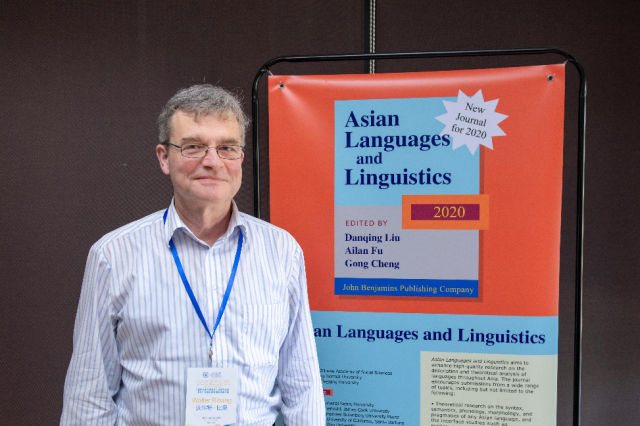
Prof. Walter Bisang is currently the director of the department of English and linguistics at Johannes Gutenberg-Universität Mainz. He is a regular member of the Academia Europaea, a regular member of the Academy of Sciences and Literature, Mainz. He is also a Chair Professor at Zhejiang University. Prof. Bisang has a wide range of research interests, including typology, grammatization, language contact, etc., focusing on languages in China, southeast Asia, west Africa, Caucasus and Ethiopia. He has published dozens of papers in Linguistics and is the editor-in-chief of several well-known Linguistics publications.
Huang Chenglong
Chinese Academy of Social Sciences, CASS
Abstract:
This paper deals with the form and function of the reciprocal constructions in Chinese languages from typological perspective. In addition, we also discuss the relationship between reciprocal meaning and other grammatical function on the basis of the previously published papers and books about reciprocal meaning.
Huang Chenglong
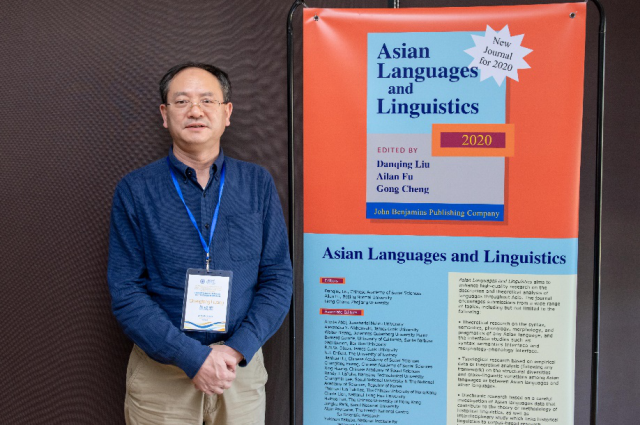
Prof. Chenglong Huang is currently a research fellow and the head of the Department of China Minority Language Studies of the Institute of Ethnology and Anthropology, CASS. He received his Ph.D in Linguistics from the City University of Hong Kong in 2004. His research interests include general linguistics, linguistic typology, functional grammar, cognitive Linguistics, Tibeto-Burman Languages, discourse analysis, Mandarin Chinese and language documentation.
Randy J. LaPolla
Nanyang Technological University
Abstract:
This paper presents the concepts of theme-rheme as discussed by the early Prague School and by Michael Halliday, and then, using the facts of Tagalog, argues that, unlike these two approaches, which conflate topic-comment and theme-rheme because all of the languages they looked at happened to have this configuration, we should expand the typology to allow for languages where topic (what the clause is about) and theme (defined as the speaker’s starting point) are not conflated. The latter is important because of the phenomenon known as “projection”, and it is also argued that typologists should consider the different mechanisms that speakers of different languages have conventionalized in order to help the addressee project (anticipate) the speaker’s intention.
Randy J. LaPolla

Prof. Randy J. LaPolla is currently the professor of Linguistics, with courtesy appointment in Chinese, School of Humnities, Nanyang Technological University, Singapore and the Distinguished Foreign Scholar for Minzu University of China. He was formerly the Cheung Kong Scholar of Minzu University of China. His research interests include Sino-Tibetan linguistics, Linguistic typology, Historical linguistics (including Grammaticalization and Sino-Tibetan reconstruction), Functional and interactional approaches to communication and language emergence, Pragmatics (particularly relevance-based approaches), anthropological linguistics and the fieldwork on endangered languages.
Lee Chungmin
Seoul National University
Abstract:
It has been discovered in the literature (Lee 1978, 1999; Kiefer 1978, Őzyildiz 2017, Lee MS submitted), that the epistemic attitude report ‘know’ in five languages may take alternant forms of complements and that factivity alternates between factive and non-factive depending on complement types, even if embedded by ‘know.’ The attitude report ‘know’ in most languages so far known typically selects for a factive complement (Kiparsky and Kiparsky 1970 a.o.). One obvious generalization made is that nominalized complements tend to convey a factive reading, while non-nominal ones tend not to (Kastner 2015, Moulton 2009 a.o.). This work makes it clear that for a clause selected by a cognitive epistemic attitude verb to have a factive reading, it not only bears a nominal (D) feature but also carries a structural case, whereas a clause for a non-factive reading, it bears none of those. This paper further points out that a nominalized clause with the internal type ‘pro-fact noun’ –(u)n kes in Korean (and in Japanese as well with koto) may be factively presupposed by itself, embedded not only by an epistemic ‘know’ and other factive verbs but also by a doxastic verb such as mit- ‘believe.’ Importantly it is contradicted if predicated by negated veracious adjectives. The non-factive alternants of ‘know’ in the four languages logically belong to the doxastic category of ‘believe’, though with implication of evidential justification in distinction with the real ‘believe,’ undergoing neg-raising, revealing their anti-rogativity. This gives rise to the complexity of complements typing and attitude reports typing.
Lee Chungmin
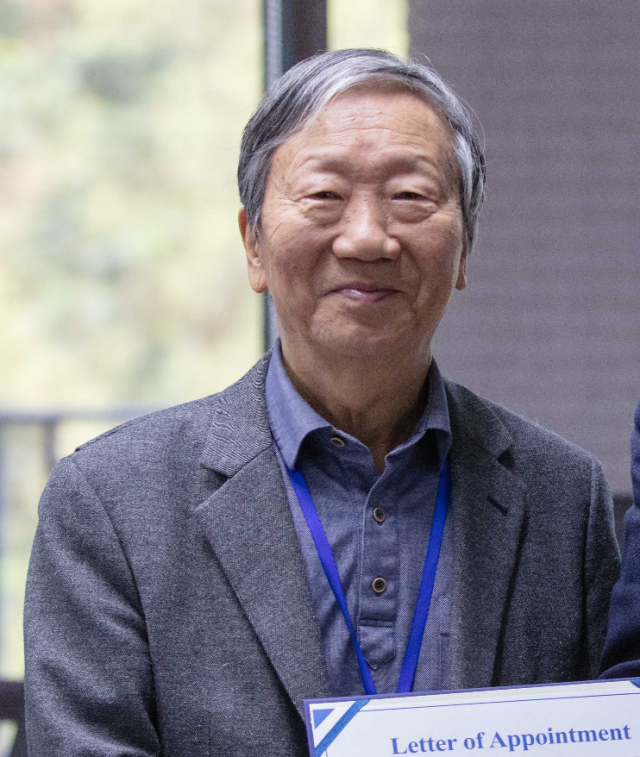
Prof. Chungmin Lee is currently the Honorary President of Intn’l Association for Cognitive Science. He received his Ph.D in Linguistics from Indiana University, U.S.A in 1973 and served as assistant professor, associate Professor, and professor in Seoul National University from 1974 to 2005. His research interests mainly focus on syntax, pragmatics, cognitive psychology and other kinds of cognitive sciences. He was elected as the Member of the National Academy of Sciences, Republic of Korea in 2014.
Liu Danqing Cao Linlin
Chinese Academy of Social Sciences, CASS
Abstract:
Linguists have long been aware that negation can be conveyed with various means, e.g. rhetorical questions, using no negators. To a certain extent, Chinese culture, as an Eastern Asian culture, is believed not to encourage people to directly negate or deny the addressee’s statement or request in the communication. So, it is abundant of indirect negations of various kinds in common speech. Most indirect negations are temporary usages involving pragmatic reference in the particular contexts, which have been intensively discussed in the previous researches. This paper will focus on those means that are already conventionalized or institutionalized and recognized as some fixed ways to express negative meaning through long-last frequent use in the past decades or longer. Here are some examples:
(1) 今年 收入 零 增长。
Jīnnián shōurù líng zēngzhǎng.
this year income zero increase
No increase in income this year.
(ling can be replaced with mei, a basic negator in Chinese.)
(2) 少 说 废话!
Shǎo shuō fèihuà!
lessen say nonsense
No more nonsense!
(shao can be replaced with bie, a canonical imperative negator in Chinese)
(3) 他 懂 个 屁!
Tā dǒng ge pì !
3sing know cl fart
He know nothing.
(pi here has no specific meaning, just functioning as an argument negator like nothing in English but with vulgar taste)
There are lots of such expressions in Chinese, the quantity of which far exceeds the scale of negative lexicon that a language normally has. Some of them have even developed to the extent of being approaching to a basic negator, for instance 懒lan ‘lazy’ in Liancheng Hakka. As a result of conventionalization and institutionalization, some of them have entered the canonical inventory of negators in Chinese as morphemes or words, and even have obtained the status of being defined as containing negative meaning in dictionaries.
However, most of the indirect negators, with specific semantics related to their etymological source or the construction in which they evolved, are still somewhat different from the basic negators. In order to distinguish them, we refer to the basic negators in a language as Primary Negators, the indirect negators as Secondary Negators. The particular semantic and pragmatic functions of the latter, as well as the distinct motivations and mechanisms underlying their negative readings, will be discussed in this paper.
Liu Danqing
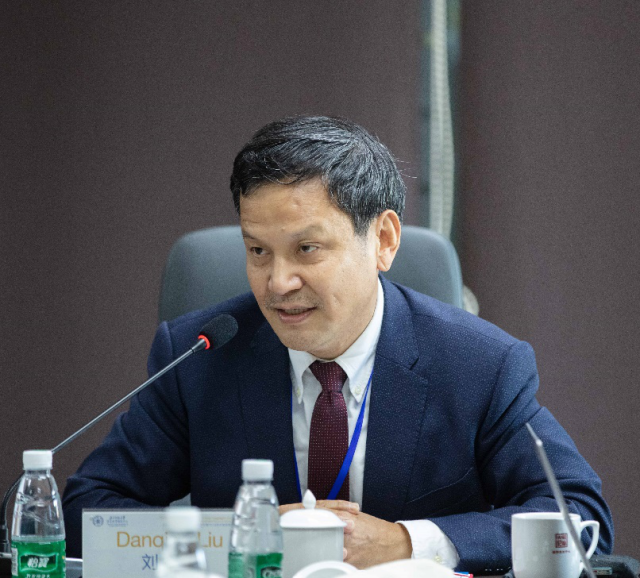
Prof. Danqing Liu is currently the Director of the Institute of Linguistics of Chinese Academy of Social Sciences (CASS). He is Distinguished Professor of the University of CASS, and the head of Department of Linguistics of the Graduate School of CASS. He is also a member of the National Committee of Language and Writing System, the Chinese Ministry of Education. He received his PhD degree in Linguistics from the City University of Hong Kong. Formerly, he served as the President of International Association of Chinese Linguistics. He has published 9 books and more than 180 papers on linguistics and Chinese.
Pan Chiajung
Nankai University
Abstract:
General studies of evidentiality of the world’s languages tend to treat Austronesian languages (including Languages spoken in Taiwan) in a very superficial/perfunctory manner and often contain fundamental errors. One reason is that such works concentrate on evidentiality in the languages with well-known rich evidential systems, e.g. in South American and North American Indian languages, in the languages of the Caucasus, and in the languages of the Tibeto-Burman family.
While evidentiality has been researched in some Languages spoken in Taiwan, little attention has been paid to grammatical evidentials in Languages spoken in Taiwan. Perhaps the most significant contribution in this regard is Pan’s published book chapter, Evidentiality in Languages spoken in Taiwan (appeared in ‘The Oxford Handbook of Evidentiality’, edited by Aikhenvald, 2018). However, as the title suggests, this is above all an account of evidentiality overall in Languages spoken in Taiwan, and has less to say on how grammatical evidentials should be explored in depth. Besides reported evidentials, other evidentials, e.g. inferred evidentials, assumed evidentials, non-propositional evidentials, miratives, etc., remain obscure. Furthermore, how evidentials are used in social contexts, interact with other grammatical categories, and are influenced by language contact/obsolescence, needs to be further studied and described. Available studies tend to limit themselves to particular aspects of this subject, such as Tsou (Yang 2000a, 2000b), Paiwan (A. Chang 2012), Kavalan (Hsieh 2012), Hla’alua (Pan 2014), Hla’alua, Kanakanavu and Tsou (Pan 2015) and Hla’alua and Kanakanavu (Pan 2016). A monograph on the study of grammatical evidentials in Languages spoken in Taiwan, however, is still needed.
Pan Chiajung
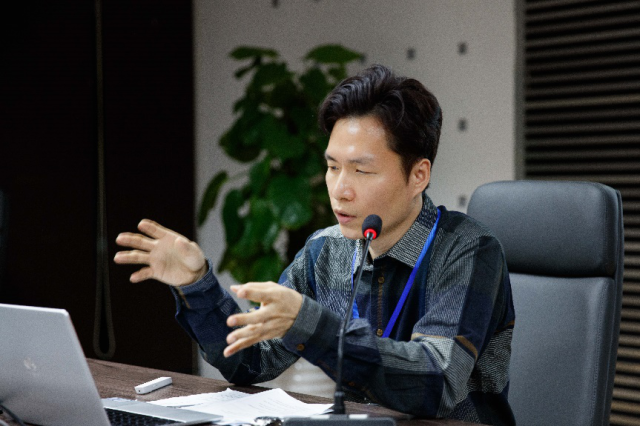
Dr. Pan Chiajung is currently an associate professor of the School of Literiture, Nankai University. He received his Ph.D in Linguistics from the James Cook University in 2012. His general research interests include linguistic typology, Austronesian linguistics, endangered languages, language contact and obsolescence.
Pan Haihua Ye Kuang
Chinese University of Hong Kong
Abstract:
In the literature of Chinese linguistics, it has long been taken as an indisputable fact that Mandarin Chinese is an accusative language in nature. The strongest and most influential evidence comes from Lü’s (1987) analysis of the argument alignment of two verbs, i.e., sheng ‘win’, and bai ‘lose’. Lü argues that the arguments of two verbs can form two different frames, which can be taken as the accusative and ergative systems, respectively. It was found by Lü that most verbs in Mandarin Chinese behave the same as sheng ‘win’ which keeps the subject of its transitive use in its intransitive use and different from bai ‘lose’ which keeps the object of its transitive use in its intransitive use. Since the sheng frame is dominant and more frequent than the bai frame, Chinese is claimed to be an accusative language without much ergativity (Lu, 1987). Ye & Pan (2017), based on five pieces of evidence, challenged Lu in arguing that Mandarin Chinese is not a consistently pure accusative language but a mixed one, or a somewhat subject-split ergative language. In this paper, we move one step further by arguing that Chinese is a true ergative language with a fluid subject. The following five pieces of evidence are presented in this paper to support our claim: (a) most intransitive verbs in Mandarin Chinese, either unaccusatives or unergatives as studied in Pan & Han (2005), can occur in SV and VS forms, which is one of the hallmarks of ergativity but not accusativity; (b) the Ba construction is claimed to be the corresponding structure of antipassive construction in Chinese, which is highly prevalent in ergative languages; (c) the Chinese-style subject drop phenomenon under discourse conditions is closely related to ergativity but not accusativity; (d) the fact that one-argument-transitive-verb constructions occur in Mandarin Chinese with ambiguous interpretations is also found in other ergative languages but not in accusative languages; and (e) the existence and frequent use of serial verb constructions in Mandarin Chinese should be in close relation to ergativity rather than accusativity. In sum, we conclude that Mandarin Chinese is not an accusative language but an ergative language in nature.
Pan Haihua
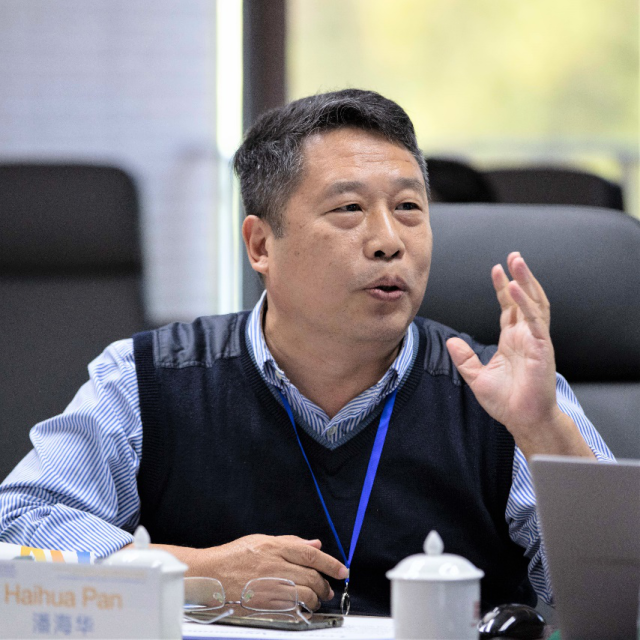
Prof. Pan Haihua is currently a professor of the Chinese University of Hong Kong. He received his PhD from the University of Texas at Austin, USA. He was awarded the Changjiang Scholar-Chair Professor by the Ministry of Education, China in September 2012 and the KC Wong Foundation Scholar in 2010. He has published two research books on Chinese reflexives and formal semantics and edited two on Chinese linguistics and focus. He is a reviewer of several prestigious international journals. His research interests include formal syntax and semantics in Chinese. He was the President of the Linguistic Society of Hong Kong during 2010 - 2011.
Park Jungku, Kang Byeongkwu, and Yu Sukyong
Seoul National University
Abstract:
This paper has investigated the variations of resultative and progressive aspect makers in 153 Chinese dialects corresponding to ‘zhe’ and ‘zai’ following the verbs in Mandarin. It shows that there are various asymmetrical phenomena of ‘zhe’ and ‘zai’ in terms of their distributions, functions or usage overlapping, and that there are many different types of aspectual systems different dialects have: the same form can function as a resultative aspect or a progressive aspect while several different forms in a dialect can have the same aspectual function. This study also tried to find empirical evidence from other languages as well as many Chinese dialects and to make theoretical explanation from linguistic typological perspective.
In Chinese dialects, ‘zhe’-type markers commonly indicate a state resulting from a preceding action, referred to as ‘resultative aspect’. They are grammaticalized from the verbal complement, and in many Chinese dialects ‘zhe’-type markers are developed to progressive aspect makers through metaphoric semantic expansion. It is why many dialects including Mandarin have ‘zhe’-type markers indicating stative resultative meaning and active progressive meaning. The ‘zai’-type markers following verbs in many Chinese dialects denote the state resulting from action. In some dialects, there may be cases that ‘zai’-type markers are not followed by the locative phrases. It shows that ‘zai’ can be regarded as a resultative aspect maker functionally equivalent to ‘zhe’. In Mandarin, ‘Zai chi fan ne’ and ‘Chi zhe fan ne’ have similar aspectual meanings which are layered into the same aspectual category through grammaticalization process. The ‘zhe’-type markers which are grammaticalized from the verb with the meaning of ‘attachment’ always follow verbs, whereas ‘zai’-type markers can either precede verbs or follow verbs. It is due to the structural and semantic constraints. Both ‘zhe’ and ‘zai’ preceded by a verb follows the Principle of Temporal Sequence. But ‘zai’ preceding a verb is grammaticalized from the verb that took the whole verb phrase as its object, while ‘zhe’ can’t have such a structural origin.
Park Jungku

Prof. Jungku Park is currently a professor at Department of Chinese Language & Literature, Seoul National University in Korea and the president of Korea Association of Chinese Linguistics. His research interests are in the area of Chinese linguistics. Recently he has been carrying out extensive research into linguistic variations with theory of grammar from linguistic typological perspective. His works concern with Chinese syntax, morphology and prosody, Chinese pedagogical grammar in teaching Chinese as second language. Hs theory of grammar is including Linguistic Typology, Information Structure, Cognitive Grammar, Construction Grammar, Grammaticalization, Semantic Map Theory, etc.
Alain Peyraube
Centre National de la Recherche Scientifique (CNRS)
Abstract:
The linguistic properties of posture verbs (expressing at-rest positions) such as 坐 zuò ‘sit’, 站 zhàn ‘stand’, 躺 tǎng ‘lie’, but also 跪 guì ‘kneel’, etc. have been well investigated since Newman (2002) in a wide range of typologically different languages. Detailed studies have also been undertaken in several Southeast languages, for instance in Lao (by Enfield 2002), or in some Tibeto-Burman languages such as Tani (by Post 2008), but they have not been the target of close attention in Chinese, especially concerning the historical evolution of such verbs since Archaic Chinese to Present-day Chinese.
The paper will try to remedy this shortfall, first in analysing the posture verbs in Standard Mandarin, but above all in tracing the historical development from Archaic Chinese to Late Modern Chinese through the different stages of Early Medieval and Late Medieval.
Their semantic components and especially the semantic distinction between expressing an action of entering into a posture vs the state resulting from that action will be investigated period by period, as well as their syntactic well known behaviour since they may be intransitive or pseudo-transitive, but with a limited set of objects (坐在椅子上 zuò zài yǐzi shàng / 坐椅子上 zuò yǐzi shàng ‘sit on a chair’) or the locative PPs associated to them can be pre-verbal or post-verbal (在炕上躺 zài kàng shàng tǎng / 躺在炕上 tǎng zài kàng shàng) ‘lie on the kang’. How these posture verbs are used to refer to tense and aspect modalities, starting in Late Medieval and their links with locative/existential verbs (see Peyraube 1980) will also be studied. The grammaticalization path hypothesized by Kuteva (1999) and Lichtenberk (2002) ‘Posture > Locative/Existential > Aspect’ will be tested.
Alain Peyraube

Prof. Alain Peyraube is currently the Emeritus director of research at the Centre National de la Recherche Scientifique (CNRS) and Chair professor of Chinese Linguistics at the Ecole des Hautes Etudes en Sciences Sociales (EHESS). He has been director of the Institute of East Asian Linguistics (CNRS & EHESS) from 1985 to 2000 and director of the Institute of Advanced Studies, Collegium de Lyon, from 2010 to 2016. His research interests mainly focus on Chinese diachronic syntax and semantics, typology of East-Asian languages, cognitive approaches to the diversity of languages, and the origin and evolution of languages.
Bernard Comrie
University of California, Santa Barbara
Abstract:
While the general lines of the areal linguistic typology of Asia are well known, there are nonetheless some pockets that are less well understood and that promise to throw light on the overall range of variation within Asia. One such pocket comprises the indigenous languages of the Andaman Islands, which have for much of history stood apart from the population and language spreads that have characterized most of Asia. They fall into two families: Great Andamanese (GA) and Ongan, with the former as the focus of this paper. In some respects GA languages go with the bulk of Asia, e.g. verb-final constituent order within the clause, but other aspects even of constituent order represent a mixture that matches neither the general Asian head-final type or the Southeast Asian head-initial type, e.g. in noun phrases possessors precede the head, while adjectives and relative clauses follow. Retroflex consonants link GA typologically to South Asia, the absence of fricatives more specifically to Dravidian – though both are also found in languages of Australia. Some properties of GA are typologically unusual, but do find presumably accidental parallels in languages spoken far away, e.g. body-part prefixes found in languages of the Americas and verb root ellipsis found in Inuktitut (Canada) and Kwaza (Brazil). GA typology presumably reflects a combination of survivals from before the spread of the large language families of Asia and idiosyncratic innovations whose spread was hindered by the islands’ isolation; it will be interesting to see to what extent we can distinguish these two factors.
Bernard Comrie
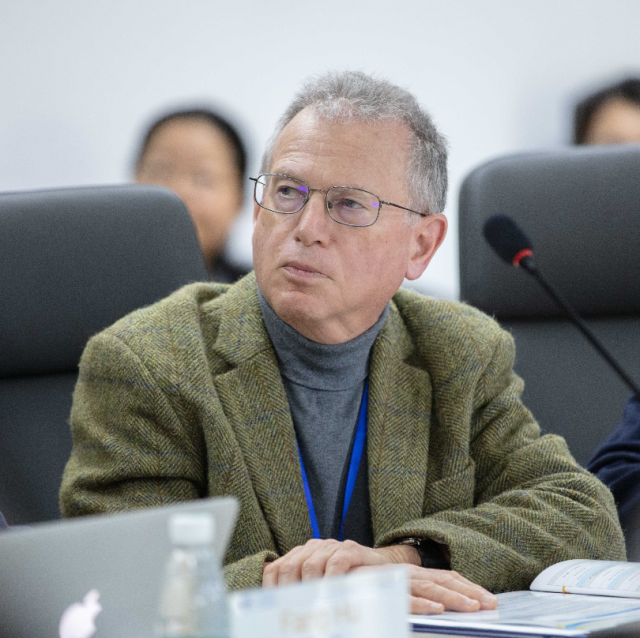
Prof. Bernard Comrie is currently the Distinguished Professor of Linguistics at the University of California, Santa Barbara. Prof. Comrie is a specialist in linguistic typology and linguistic universals, and on Caucasian languages. He was elected a Fellow of the British Academy (FBA), the United Kingdom's national academy for the humanities and social sciences. He became a foreign member of the Royal Netherlands Academy of Arts and Sciences in 2000. In September 2017, he was awarded the Neil and Saras Smith Medal for Linguistics by the British Academy.
Anvita Abbi Vysakh R
Goa University
Abstract:
Luro, an Austroasiatic language of the Mon-Khmer group is spoken in the Teressa Island of the Andaman and Nicobar group of islands in the Bay of Bengal, India. Luro is a critically endangered language spoken by less than 2,000 speakers (Directorate of Census Operations 2011). The morphology of Luro is virtually undescribed in detail so far. The previous works are restricted to limited wordlists and a partial dictionary (deRoepstorff (1875), Cruz (2005), Man (1889) and Rajasingh (2019)). This is the first-ever account of word formation process in the language based on first-hand data collected in the field by the authors. Luro is an agglutinative language with heavy use of derivational morphology employing all kinds of affixes. Although word order is flexible at different syntactic structures, Luro is a verb initial language with prototypical ordering of VOS. Word formation processes include among others, compounding, derivation, and incorporation. Although language does not have an extensive case marking system postpositions appear on some nouns optionally. Nouns are marked for duality and plurality but not for gender. Negation is indexed with pronoun morphology and participates in formation of antonyms. Kinship terminology, deictic system, and Number system have also been dealt with to represent diverse word formation processes. The authors hope that the current documentation effort will contribute to future research in comparative Nicobarese.
Anvita Abbi
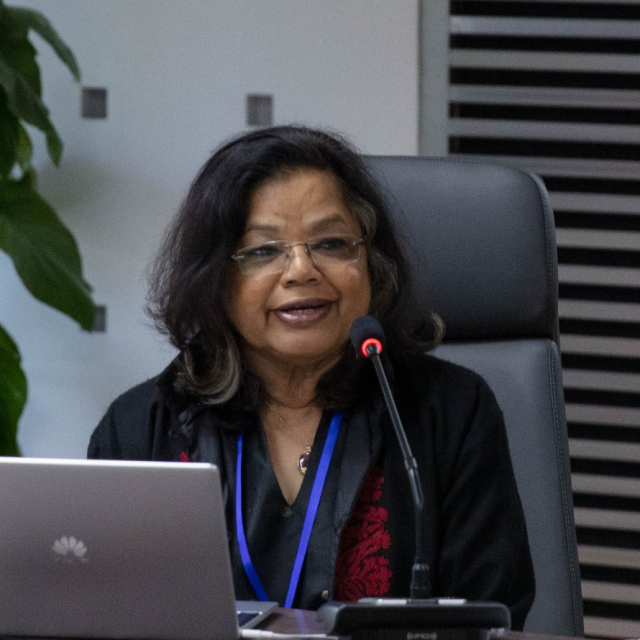
Prof. Anvita Abbi is currently a professor of Simon Fraser University, Canada and Goa University, India. She formerly served at the Centre for Linguistics, Jawaharlal Nehru University, New Delhi, and visited the Max Planck Institute of Evolutionary Anthropology, Germany as a Guest Scientist. Her studies on tribal languages and other minority languages of South Asia has been exemplary and is widely recognized in the world. Her pioneering work on the highly endangered languages of the Andaman Islands has been received with great acclaim in India and abroad.
Yukinori Takubo
National Institute for Japanese Language and Linguistics
Abstract:
In this talk, I will discuss language diversity in Japan. Japan has been known as a monocultural and mono-linguistic society. In 2009, however, UNESCO listed eight languages spoken in Japan in the Atlas of the World's Languages in Danger: Ainu, Hachijo, Amami, Kunigami, Okinawa, Miyako, Yaeyama and Yonaguni. UNESCO’s reason for listing those languages as distinct from Japanese is that they are mutually unintelligible. Ainu had long been known as genetically unrelated to Japanese and had been recognized as a distinct language. The remaining seven languages, however, are genetically related and had usually been treated as ‘dialects’ of Japanese by Japanese scholars and the problem of mutual intelligibility had never been given a serious consideration. It is doubtful that UNESCO conducted an objective test to measure the degree of mutual intelligibility and their criteria for treating those varieties of Japanese as ‘languages’ rather than ‘dialect’ are not so obvious.
In this talk I will introduce our project of designing objective tests to measure mutual intelligibility between two languages or two varieties of a language and show the results of a series of tests that we conducted in some of the languages listed above. The method is an extension and refinement of that used by Professor O’Grady and his group (O’ Grady 2014 and Yang et al. 2018). The results show that those languages are indeed languages distinct from standard Japanese in the sense that they are shown to be mutually unintelligible by our mutual intelligibility tests, suggesting that contra the common belief that Japan is virtually a monolingual and mono-cultural society, it is a society with multiple languages and therefore a multi-cultural society (Takubo 2018).
We will also show that the mutual intelligibility tests can be used to measure the degree of endangerment of the language to be tested because they can measure the degree of intergenerational transmission by comparing the scores of a younger generation with an older generation. They can be a very useful diagnostic for the degree of language endangerment, which is essential in designing methods for revitalization (see Yamada et al. in press).
Yukinori Takubo

Prof. Yukinori Takubo is currently the Director-General of National Institute for Japanese Language and Linguistics. He is also Professor Emeritus of Kyoto University from Mar 2016. His current research interests include syntax, semantics, discourse management theory, and Mental Spaces. He is also engaged in the documentation of Ryukyuan languages with a focus on the preservation and revitalization of endangered languages in Southern Ryukyu.